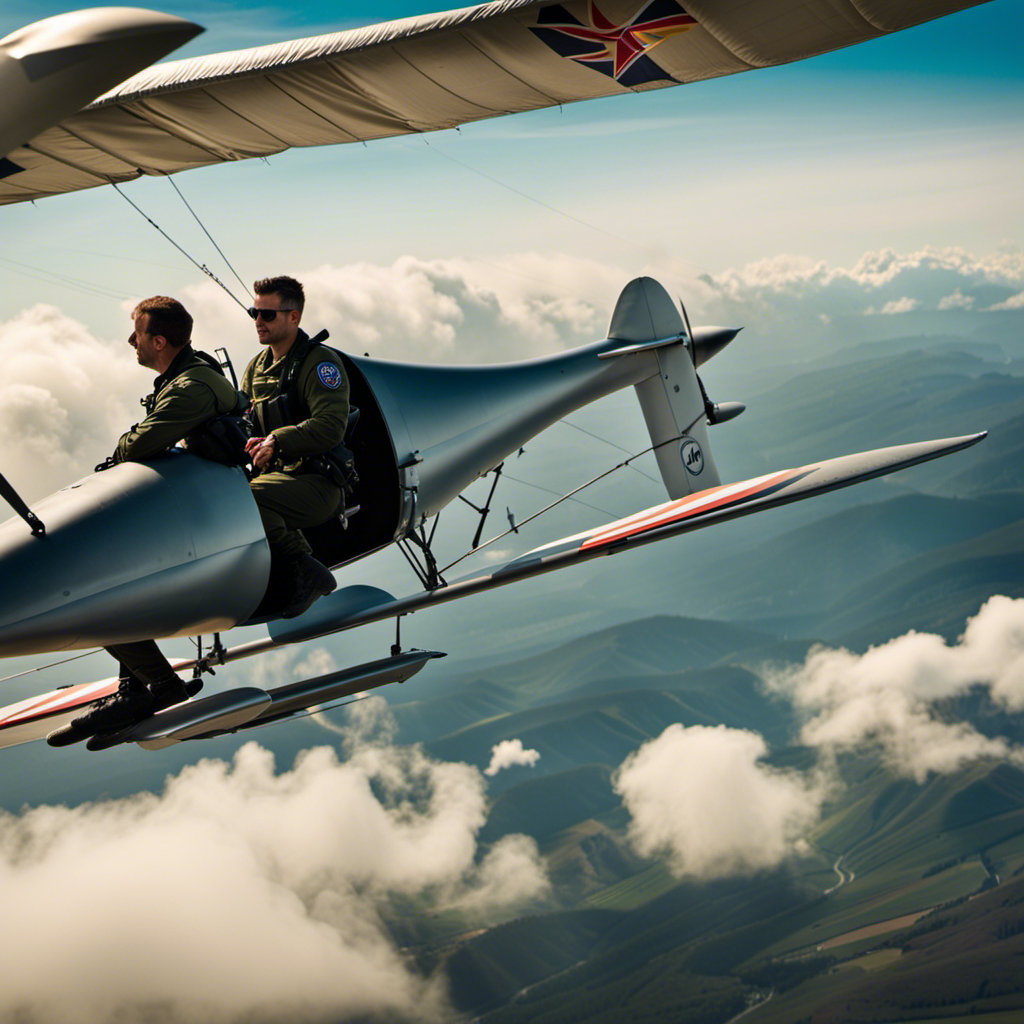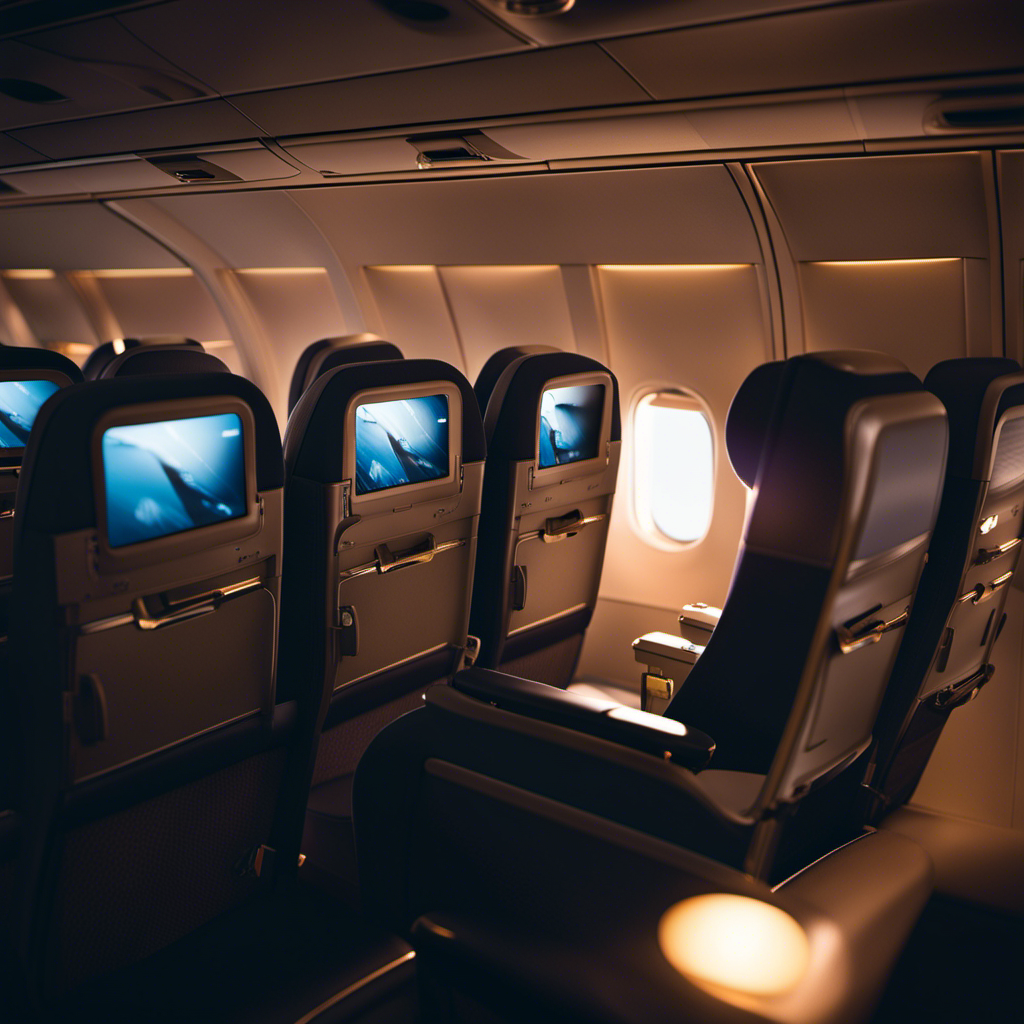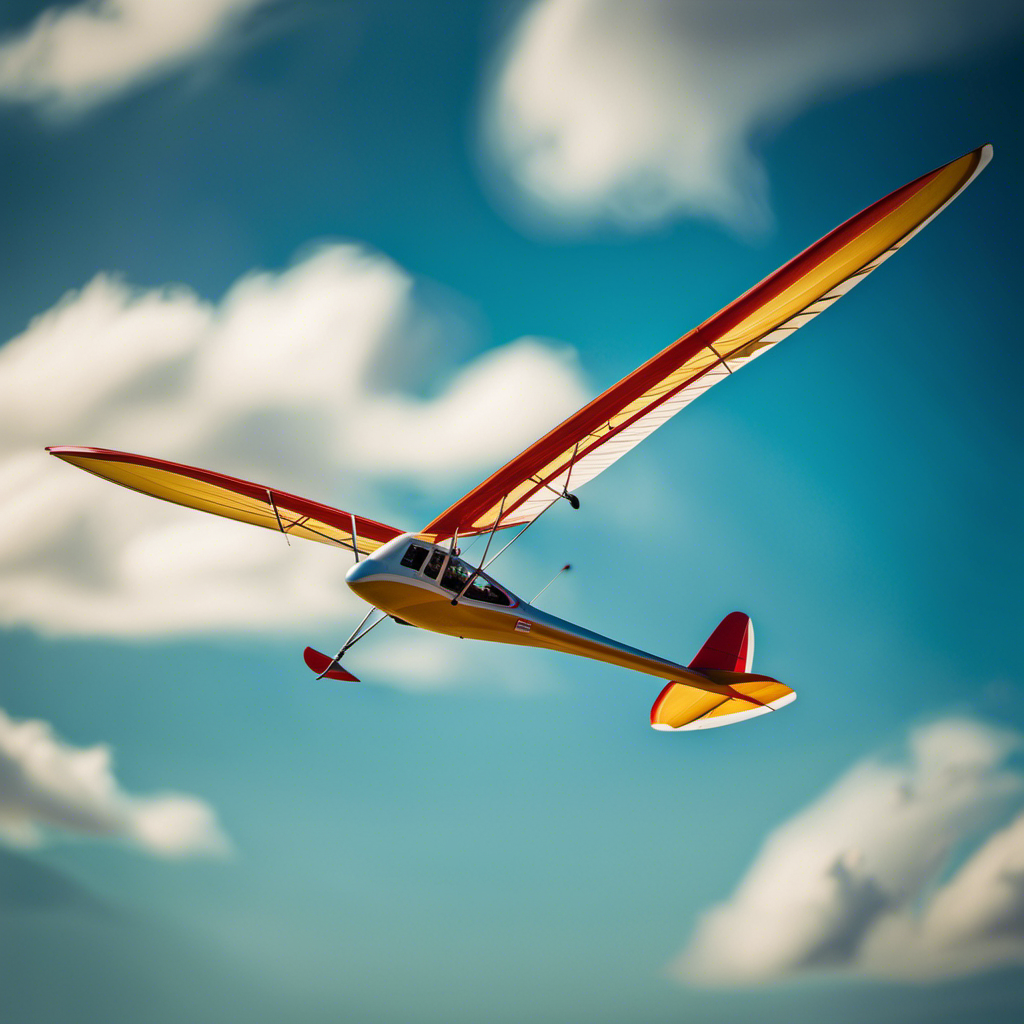As a military aircraft pilot, I have always been fascinated by the world of gliding and the freedom it offers in the sky. You may be wondering how someone like me can obtain a commercial glider rating from the FAA, correct?
Well, let me tell you, it’s not as daunting as it seems. In this article, I’ll guide you through the requirements, flight hours, training, and exams needed to achieve this prestigious rating.
So, fasten your seatbelts and let’s soar into the world of glider piloting!
Key Takeaways
- Military pilots can obtain an FAA commercial glider rating by following the same requirements as civilian pilots.
- They can transfer their military flying experience to civilian glider rating, which can benefit them in obtaining the rating.
- Military pilots can also take advantage of additional training and certifications to enhance their skills and knowledge in gliding.
- Obtaining an FAA commercial glider rating allows military pilots to explore career opportunities beyond military aviation and enjoy the freedom of gliding without engine reliance.
Understand the Requirements for a Commercial Glider Rating
To get a commercial glider rating, you’ll need to understand the specific requirements set by the FAA. Commercial glider training is an essential step for those seeking glider pilot career opportunities.
The first requirement is to hold a private pilot certificate with a glider category rating. This means you must have already completed the necessary training and passed the FAA knowledge and practical exams.
Additionally, you must be at least 18 years old, able to read, speak, and understand English, and have logged a minimum of 100 flight hours as a pilot, with 20 of those hours in gliders. Understanding these requirements is crucial in pursuing a commercial glider rating.
Once you have met these prerequisites, you can move on to completing the required flight hours and training.
Complete the Required Flight Hours and Training
After completing the required flight hours and training, a military pilot can earn an FAA commercial glider rating. To obtain this rating, a pilot must have a certain amount of flight experience in gliders and meet specific training requirements. The FAA requires a minimum of 100 flight hours in gliders, with at least 10 solo flight hours and 20 hours of cross-country flight. These flight hours must be logged and verified by a certified flight instructor.
Additionally, pilots must complete ground training on topics such as aerodynamics, weather, and regulations. The training requirements ensure that pilots have the necessary knowledge and skills to safely operate gliders in commercial operations. Once the flight hours and training requirements are met, a military pilot can apply for the FAA commercial glider rating.
This rating opens up opportunities for military pilots to pursue glider-related careers or engage in commercial glider operations. However, obtaining a commercial glider rating is just one step in the process of becoming a fully qualified pilot. The next section will discuss the steps required to obtain a private pilot certificate, which serves as a foundation for further pilot certifications and ratings.
Obtain a Private Pilot Certificate
First, you’ll need to meet the eligibility requirements to obtain a private pilot certificate. This is an essential step in the process of obtaining a commercial glider rating.
To obtain a private pilot certificate, you must:
-
Be at least 17 years old: The Federal Aviation Administration (FAA) requires that you be at least 17 years old to obtain a private pilot certificate.
-
Meet the medical requirements: You must pass a medical examination conducted by an FAA-approved medical examiner to ensure that you are physically fit to operate an aircraft.
-
Complete the required flight training: You must complete a minimum of 40 hours of flight time, including 20 hours of flight instruction and 10 hours of solo flight.
-
Pass the written and practical exams: Once you have completed the necessary flight training, you must pass a written knowledge test and a practical exam to demonstrate your knowledge and skills.
Meeting these requirements will set you on the path to obtaining a private pilot certificate and ultimately pursuing a commercial glider rating.
Meet the Medical and Age Requirements
Once you’re at least 17 years old, you’ll need to pass a medical examination to ensure you’re physically fit for operating an aircraft. Meeting the medical and age requirements is an essential step in becoming a military pilot and obtaining an FAA commercial glider rating.
This examination evaluates your overall health, vision, hearing, and any medical conditions that may affect your ability to fly safely. It is important to note that certain medical conditions may disqualify you from pursuing a career as a pilot.
Once you have met the medical and age requirements, you can then explore the career opportunities available and begin your journey towards becoming a military pilot.
Transitioning into the subsequent section, the next step in the process is to pass the FAA written exam.
Pass the FAA Written Exam
To pass the FAA written exam, you’ll need to study and understand the various regulations and procedures involved in operating an aircraft. It’s crucial to dedicate ample time and effort to studying for the exam.
The exam covers topics such as airspace rules, weather patterns, navigation techniques, emergency procedures, and aircraft systems. You can find study materials online or at aviation schools to help you prepare. It’s important to thoroughly review and practice with practice exams to ensure you’re familiar with the format and content.
Additionally, seeking guidance from experienced pilots or instructors can provide valuable insights and tips for success. Once you have passed the written exam, you can move on to the next phase of the certification process: completing the practical flight test, where you’ll demonstrate your skills and knowledge in a real flight scenario.
Complete the Practical Flight Test
Completing the practical flight test is essential for demonstrating your skills and knowledge in a real flight scenario. This test is the culmination of your flight training and serves as the final evaluation of your abilities as a pilot.
During the practical flight test, an FAA designated examiner will observe and evaluate your performance in various flight maneuvers and procedures. This includes demonstrating your ability to take off, land, navigate, perform emergency procedures, and handle different flight conditions. The examiner will assess your decision-making skills, airmanship, and overall competency as a pilot.
It is important to approach this test with confidence and preparedness, as it is the last hurdle before you can apply for the commercial glider rating. To successfully complete the practical flight test, you must showcase your proficiency and demonstrate your readiness to operate a glider in real-world situations.
Apply for the Commercial Glider Rating
Before applying for the commercial glider rating, it’s important to meet the necessary requirements and demonstrate your proficiency as a pilot.
To apply for the FAA commercial glider rating, you must hold at least a private pilot certificate and have a minimum of 200 logged flight hours, including 20 hours of flight time in gliders. Additionally, you must pass a written knowledge test and a practical flight test with an FAA-designated examiner.
The practical flight test will assess your ability to perform various maneuvers and demonstrate your knowledge of glider operations. Once you have met these requirements, you can submit your application to the FAA for the commercial glider rating.
It’s a rigorous process, but obtaining this rating can open up new opportunities and enhance your flying skills.
Now, let’s explore how to maintain and renew the commercial glider rating.
Maintain and Renew the Commercial Glider Rating
Maintaining and renewing the commercial glider rating requires meeting certain requirements and demonstrating continued proficiency as a pilot. To stay current, I must fly a minimum number of hours and complete a flight review every two years. This ensures that my skills and knowledge are up to date.
In addition to the flight review, I also need to complete a certain number of takeoffs and landings to maintain currency. Continuing education is also important, as it allows me to expand my knowledge and skills as a pilot. I can attend seminars, workshops, or take online courses to stay informed about the latest techniques and regulations. By actively participating in these activities, I can ensure that I am always at the top of my game.
Considering additional training and certifications can further enhance my abilities as a pilot, opening up new opportunities in the industry.
Consider Additional Training and Certifications
Now that we have discussed the importance of maintaining and renewing the Commercial Glider Rating, it is crucial to consider additional training and certifications to further enhance one’s skills as a glider pilot. These additional certifications and advanced training programs not only demonstrate a commitment to professional development but also open up new opportunities in the field of aviation.
Here are some key considerations:
-
Instrument Rating: Obtaining an Instrument Rating allows pilots to fly in adverse weather conditions and increases their overall flying capabilities.
-
Flight Instructor Certification: Becoming a certified flight instructor not only solidifies one’s own knowledge but also enables them to pass on their expertise to aspiring pilots.
-
Aerobatic Training: This specialized training equips pilots with the skills to perform complex maneuvers and adds a thrilling dimension to their flying abilities.
-
Glider Maintenance Certification: Acquiring a certification in glider maintenance provides a comprehensive understanding of the aircraft’s mechanical aspects and enhances safety practices.
-
Soaring Cross-Country Training: This training focuses on navigation and long-distance flights, expanding a pilot’s horizons and enabling them to explore new destinations.
Explore Career Opportunities as a Glider Pilot
Exploring career opportunities as a glider pilot can lead to exciting and fulfilling experiences in the aviation industry. As a glider pilot, you have the chance to soar through the skies, relying solely on the wind and your piloting skills.
Gliders offer a unique flying experience, allowing you to master the art of gliding and maneuvering without the use of an engine. The demand for glider pilots is growing, with opportunities in various sectors such as recreational flying, aerial photography, and even scientific research.
With the right training and certification, you can become a sought-after glider pilot and enjoy the freedom of flying without the noise and emissions of traditional aircraft.
Frequently Asked Questions
Can military pilots receive any credit towards their commercial glider rating for their previous flight experience?
Yes, military pilots can receive credit towards their commercial glider rating for their previous flight experience. This allows them to apply their skills and knowledge gained from their military training towards obtaining their FAA commercial glider rating.
Are there any specific medical conditions that would disqualify someone from obtaining a commercial glider rating?
Having certain medical conditions can disqualify individuals, including military pilots with flight experience, from obtaining a commercial glider rating. It is important to meet the FAA’s medical standards to ensure safety in the skies.
How long does it typically take to complete the required flight hours and training for a commercial glider rating?
It typically takes several months to complete the required flight hours and training for a commercial glider rating. The amount of time may vary depending on individual progress and availability of training resources.
Can a commercial glider rating be obtained concurrently with a private pilot certificate, or does one need to be obtained before the other?
Obtaining a commercial glider rating can be done concurrently with a private pilot certificate. The benefits include expanding skills, enhancing job prospects, and opening doors to glider flight instruction. The process involves meeting the FAA requirements and passing the required exams.
Are there any specific limitations or restrictions on the privileges of a commercial glider rating compared to other pilot certifications?
There are limitations on the privileges of a commercial glider rating, such as not being able to fly for compensation or hire. Additionally, medical disqualifications can restrict a pilot from obtaining or maintaining this rating.
Conclusion
In conclusion, obtaining a commercial glider rating as a military pilot requires dedication, training, and perseverance.
It is a journey that takes time and effort, but the rewards are worth it.
Just like a soaring glider, this achievement allows you to reach new heights in your aviation career.
By meeting the requirements, passing exams, and maintaining your rating, you can explore a variety of career opportunities in the world of glider piloting.
So spread your wings and let your dreams take flight!
With a heart that soars as high as the skies, Aria, affectionately known as “Skylark,” is the driving force behind Soaring Skyways. Her journey into the gliding world began as a young dreamer gazing up at the soaring birds, yearning to experience the weightlessness and freedom they embodied. With years of experience both in the cockpit and behind the scenes, Aria’s commitment to the gliding community is unwavering.










